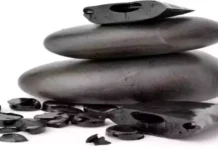Do you want to remove ink from stamp pads without damaging them? If yes, then you might just want to try a new solution called Stamp Pad Ink Remover. This natural liquid removes ink stains, leaving behind no residue or damage to your paper.
Stamp pads are one of the most useful items that every artist should have. They come in various colors and shapes. Many artists prefer using a roller stamp because it allows them to create beautiful designs on their projects.
Stamp pads are one thing that helps to improve your artwork and makes it look better. When applying colors to your artwork, you can get into trouble if you don’t clean your stamp properly. Sometimes, leftover ink can ruin your project and even make it unusable.
Is ink a long-lasting medium—or is it? You’re in luck if you’ve ever wondered how to remove ink stamps off sheets of paper, book covers, and book page edges. You may easily erase ink from paper using common household items in a non-toxic and cost-effective manner. This method may also be used to erase markers, pens, charcoal, and colored pencil markings. The results will differ based on the ink and paper used.
How to Remove Ink Stamps from a Sheet of Paper
1. Start with an eraser. If the ink stamp is light enough, a simple eraser could suffice. The document will be better protected as a result of this. As long as the pencil erasers are still soft, they’re good. Switch to something more abrasive if you’re not making any progress after roughly five minutes.
2. Get some sandpaper. As long as the grit is between 150 and 400, any variety will work. The stronger the abrasiveness, the lower the grit. If you’re working with thin paper (like notebook paper), go for the highest grit.
3. Remove a piece of sandpaper. Make sure it’s around 1 inch by 1 inch (2.5 by 2.5 cm). This will be tiny enough to focus on the ink stamp while leaving the rest of the region unaffected.
4. Prepare your work area. On your work table, spread out many pieces of scrap paper. Stack them on top of each other. This is to protect your paper from the table’s rough surface and prevent tearing. The number of sheets required will be determined by the thickness of your working paper.
- Check to see if your work surface is stable. It should be sufficient to use a table. Remove anything you won’t use.
5. Set up the stamp on the paper. Place it on top of the scrap paper, facing up. With your free hand, firmly hold it down. Make sure you utilize your entire hand, not just your fingertips. The inked part of the paper should be visible between your thumb and index finger with this hand. Ensure that the paper is completely flat.
6. Using sandpaper, remove the ink from the paper. Working apart from your body is a good idea. Slow and soft strokes are recommended. Avoid putting too much pressure on the button. Patience is required. This process can take a long time.
- Hold the paper up to the light while you sand to be sure you’re not sanding through it.
- You may clean the sandpaper by holding it up and flicking the back of it when it feels less grainy.
7. With an eraser, alternate. As the ink grows lighter, try removing it. This is mostly for any smearing effects caused by sanding. Continue with the procedure. Continue to sand the stamp. You may use the eraser to eliminate any remaining markings as they fade.
Keep in mind that the paper is weaker where you’ve sanded it, so go slowly and carefully.
As soon as possible after staining, treat the stain. The stain will be more difficult to remove the older it is.
Prior to washing washable items, all stain removal procedures should be used. It’s very hard to erase stains that have been washed and dried.
Fabrics that can be washed
- What you’ll require
- Kitchen knife with a sharp edge
- Hand Dishwashing Detergent in Liquid
- Ammonia
- vinegar (white)
- Bleach with chlorine or oxygen

Cleaning Procedures
- Remove any extra material using a scraper.
- 1-quart lukewarm water, 1/2 teaspoon liquid hand dishwashing soap, and 1 tablespoon ammonia, soaked for 15 minutes
- To dislodge the stain, gently rub it from the back.
- Soak in the aforementioned mixture for another 15 minutes. Rinse.
- Soak for 30 minutes in 1-quart warm water with 1 tablespoon of white vinegar.
- If the color stain persists, wash it using chlorine bleach or oxygen bleach if the fabric allows it.





